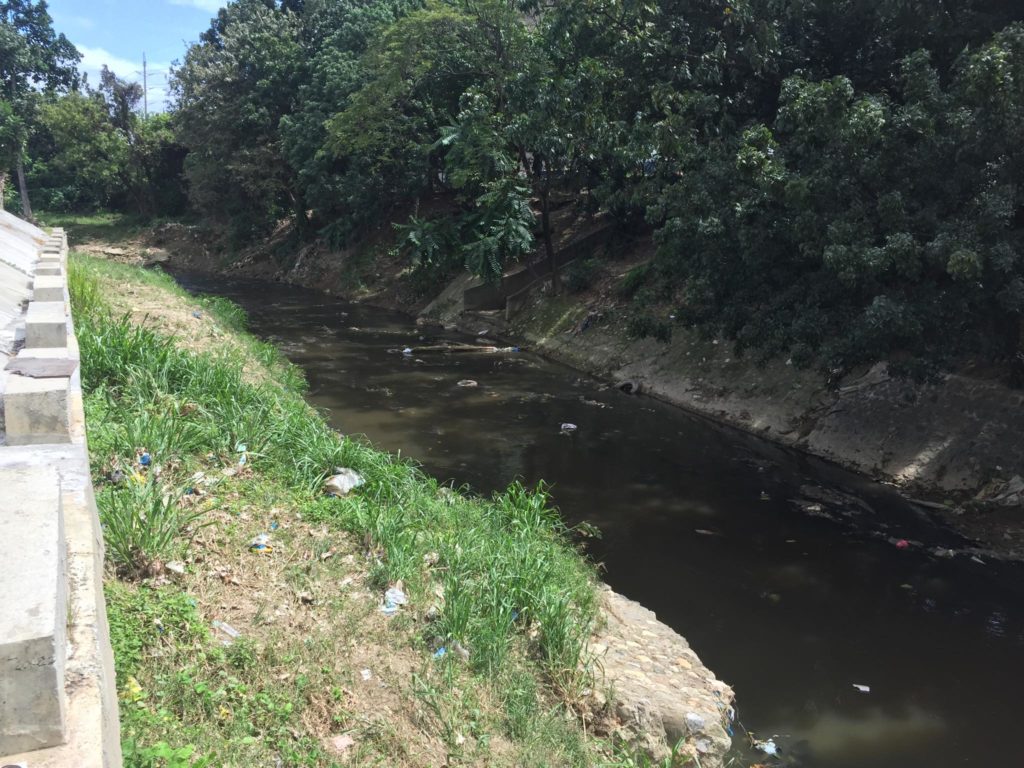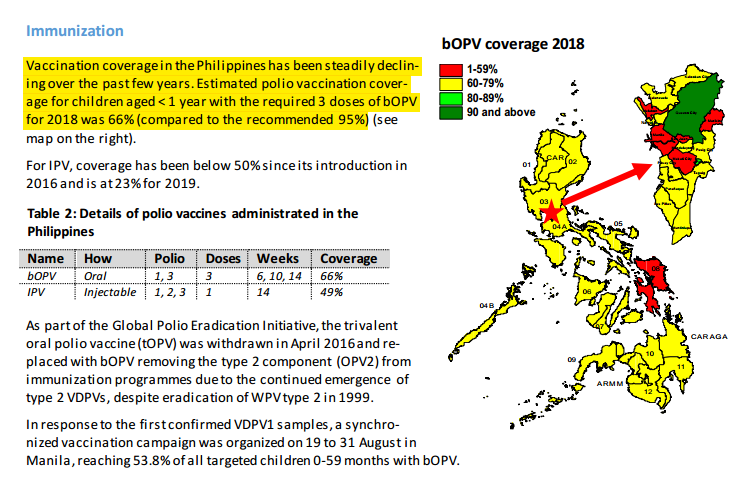Poliovirus in Butuanon River: Health and sanitation issues all rolled into one

A stretch of the Butuanon River from the Mandaue City side is seen in this February 17, 2020 photo. CDN Digital photo | Raul Tabanao
MANDAUE CITY, Philippines – Rivers played a vital role throughout humanity’s existence.
In history, they were used as indicators where some of the world’s first civilizations flourished. In art and literature, the little streams connecting to them represent the start of life as well as the power of nature.
The same thing could be said about the Butuanon River, regarded as one of Metro Cebu’s major tributaries, which cuts across two major cities in the island-province before spilling its contents to the Mactan Channel.
But locals living near the Butuanon can attest how the once vibrant 23-kilometer river that gave and symbolized abundance in Mandaue City has degenerated throughout the years as a result of rapid urbanization.
READ MORE: Butuanon River: ‘No stronger legacy’
This is why it didn’t come as a shock to some residents when health officials confirmed reports from the Research Institute of Tropical Medicine (RITM), the state-ran research facility based in Muntinlupa City in Metro Manila, that the Butuanon River is contaminated with poliovirus.
READ MORE: Residents in riverside communities in Mandaue City worried over polio-contaminated Butuanon River
What is Polio?
Poliovirus is the virus that causes poliomyelitis, also known as or simplified as polio, which is a disease that attacks the nervous system.
In September 2019, The Department of Health (DOH) declared a national polio outbreak when laboratory results confirmed re-emergence of the disease in the country after 19 years of being officially polio-free.
The last case of wild poliovirus recorded in the Philippines was in 1993. Seven years later, or in 2000, the World Health Organization (WHO) declared the country polio-free.
The first confirmed case of reemerged polio is a 3-year-old girl from Lanao del Sur, who tested positive for vaccine-derived poliovirus type 2 (VDPV2).
According to health experts, children below five years old are highly susceptible to polio – a highly infectious disease.
WHO defines vaccine-derived polioviruses, labelled as VDPV, as ‘rare strains of polioviruses, genetically mutated from the strain contained in oral polio vaccines (OPV).’
“A single confirmed polio case of vaccine-derived poliovirus type 2 (VDPV2) or two positive environmental samples that are genetically linked isolated in two different locations is considered an epidemic in a polio-free country,” DOH said in their statement.
WHO said the Philippines is affected by two types of circulating VDPV (cVDPV) – cVDPV type 2 (cVDPV2), and cVDPV type 1 (cVDPV1).
Vaccination
Even before the disease reemerged, WHO said that the country is placed at high risk for poliovirus transmission by the Western Pacific Regional Commission for Certification of Poliomyelitis Eradication (RCC).
Among the factors they cited were ‘poor sanitation and hygiene conditions,’ as well as suboptimal performance of acute flaccid paralysis (AFP) surveillance and immunization coverage with polio vaccines.
Health experts stated that there is no cure for polio, but it can be prevented through vaccination. In the Philippines, 95 percent of the population should be inoculated to stop the spread of the virus.
However, WHO noted the country has not reached this target, and added that they observed a steady decline of vaccination coverage in the country from 2016 to 2018.
Reports from WHO show that most regions in the country, including Central Visayas, have an estimated polio vaccination coverage for children age below one-year-old between 60 percent to 79 percent in 2018.
“To protect children against polio, they must receive at least three doses of polio drops and one dose of polio shot, provided for free to children one-year-old and below in the routine immunization programme,” they said.

Source: WHO
On February 17, 2020, the DOH said it will be initiating intensified AFP surveillance, and strengthen vaccination campaigns in different regions in the country, including Cebu.
The local governments of Mandaue City and Cebu City have also expressed intentions to help DOH in vaccinating and profiling communities at risk of contracting the disease.
READ MORE: DOH to roll out intensified surveillance, vaccination drives against spread of polio in CV
Sanitation
Polio can be transmitted person-to-person through the fecal-oral route, with a contaminated vehicle such as food and water. Symptoms include fever, fatigue, headache, vomiting, stiffness of the neck and limbs and worse – paralysis.
Aside from persuading parents to have their children inoculated, officials also urged the public to keep their surroundings clean, dispose of their wastes properly, and also emphasized the importance of practicing personal hygiene.
“VDVPs occur, in rare occasions, in areas with inadequate sanitation,” WHO added.
DOH Central Visayas (DOH – 7) director, Dr. Jaime Bernadas, said extracting environmental samples from various parts of the country is part of their agency’s ways of monitoring possible re-emergence of polio.
Now that laboratory experts confirmed that poliovirus is present in one of Cebu’s major rivers, Bernadas said they will immediately activate case finding not only in Mandaue City, where the samples were reportedly taken, but also in nearby areas including the cities of Cebu, Lapu-Lapu, and Consolacion town.
“You have to remember that the mouth of Butuanon River spills into Cansaga Bay and into Mactan Channel. This is why it was agreed upon that it (case finding and vaccination drives) should not be limited to Mandaue City only. We have to include neighboring areas,” he said.
READ MORE: DOH-7 activates case finding initiatives to prevent possible polio spread in CV
Bernadas also renewed their office’s calls for the public to practice personal hygiene, observe proper waste disposal, and avoid being exposed to contaminated areas, particularly the Butuanon River.
“We advise the public to always keep their surroundings clean, observe proper hygiene as well as proper waste disposal,” he added.
In 2018, the City Environment and Natural Resources Office (CENRO) of Mandaue City recorded 62 establishments – both small and large – reportedly dumping untreated wastes to Butuanon River.
For the same year, the city government also said they spent around P104 million to improve the river’s drainage master plan, as part of their flood control prevention measures.
Bernadas likewise advised the public to, as much as possible, avoid areas where flood water from the Butuanon River will likely reach, especially during heavy downpours.
Poliovirus in Mandaue, Cebu
So where did the poliovirus found in the Butuanon River come from?
According to Bernadas, they are looking into the possibility that a carrier of poliovirus is present within the proximity of the river.
The Global Polio Eradication Initiative (GPEI), the world’s largest health initiative, reported that cVDPV2 was found in the environmental samples taken from Cebu.
“Three cVDPV2 positive environmental samples were reported: two from the National Capital Region and one from Central Visayas province,” GPEI stated in their weekly report on the polio situation in the Philippines.
Meanwhile, local officials from Cebu and Mandaue announced on February 17, 2020 that they are also eyeing to relocate residents living near the river, and massive clearing operations on identified ‘danger zones’ as part of their measures to contain the virus.
READ MORE: Mandaue, Cebu to start clearing Butuanon River; eye relocation sites for affected residents
In the meantime, the Mandaue City Government has barred the public from accessing not only Butuanon River but also two other waterways in the city – the Mahiga and Tipolo Creeks – to contain the virus.
As of February 15, there are 17 confirmed re-emerged cases of polio in the Philippines.
There are no confirmed reports of polio cases in Central Visayas as of this posting. /bmjo
Disclaimer: The comments uploaded on this site do not necessarily represent or reflect the views of management and owner of Cebudailynews. We reserve the right to exclude comments that we deem to be inconsistent with our editorial standards.
